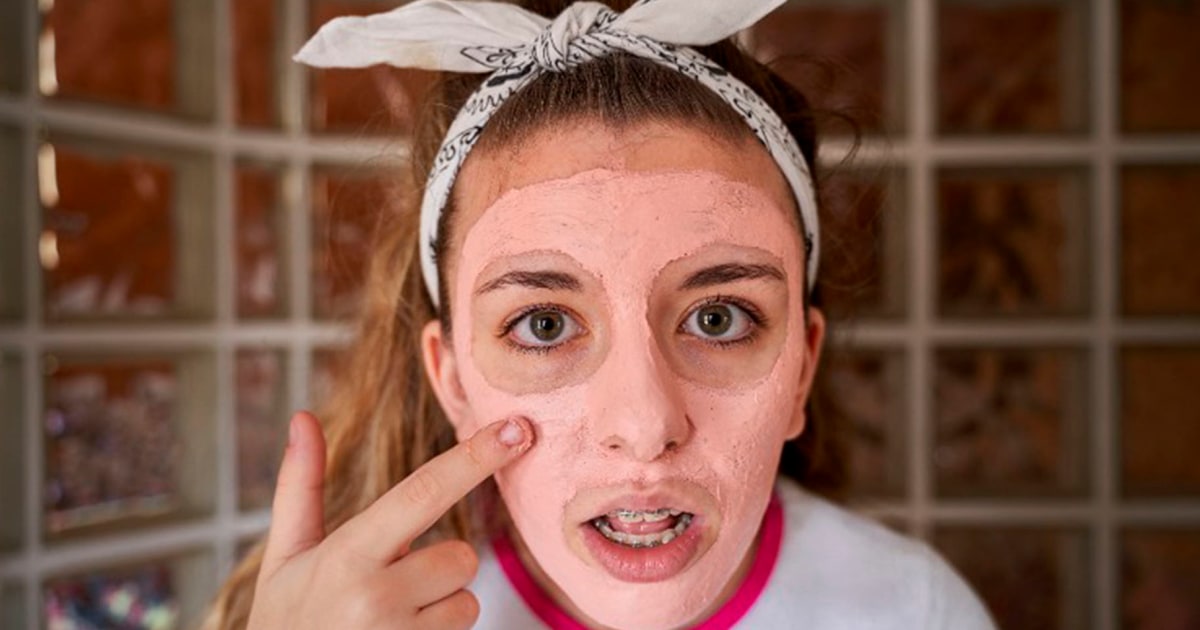cosmeticorexia It poses a risk due to the indiscriminate use of beauty products and rituals on the skin of pre-adolescent and adolescent girls and boys that can affect and compromise their dermatological health due to the composition of the products.
The trend of recording and showing skincare or facial care on social networks has become a concern for girls and adolescents who want to imitate profiles of older people who share their skin care. Nevertheless, most beauty rituals They are neither indicated nor necessary at such a young age. Its use, according to dermatologists, can be counterproductive, even negative.
It is common for pre-adolescent girls to imitate the habits of care and beauty that they see around them, in the media, in movies… it is something typical of adolescence, a time of change, of searching for one's own identity.
However, this time the game goes further because many girls are looking for, buying and consuming products that they do not need and that are also indicated for other skin types and ages.
The Organization of Consumers and Users (OCU) warns against the growing use of cosmetics among minors and Leandro Martínez, Head of the Dermatology Service at the Hospital of Málaga and director of the Dermacenter dermatological clinic explains how these beauty rituals can affect the skin of girls and adolescents.
What is cosmeticorexia?
This recently created term is used to describe the obsession with cosmetic and beauty products outside the indication of a dermatologist or professional.
It is not a mental disorder or illness. It's something like if you always walk with an umbrella on days without rain. Your body does not need to protect itself from anything and it still does it, because with creams and products it can even be counterproductive,” Martínez exemplifies.
“The truth is that children and adolescents are exposed to some Beauty canons increasingly unrealistic and difficult to achieve, becoming obsessed with this can lead to discomfort, anxiety or stress, or even lead to the use of cosmetics at a very young age and without medical recommendation,” adds the expert.
Social networks and costometicorexia
“From what I see, all these practices are related to skincare therapies that are so fashionable on social networks like Tiktok. It is not that these habits are bad, but they are counterproductive at an early age,” says Leandro Martínez.
The problem is that minors consume these products because they have seen it on social networks, not because of a medical recommendation,” adds the dermatologist.
Furthermore, according to the OCU, younger people, usually without purchasing power, tend to buy the cheapest, for example, in bazaars or large marketplaces, where the products may not be as controlled as in the usual channels.
Often what they buy are counterfeits or “beauty” products that are sold online without any control: teeth whiteners with hydrogen peroxide, which can damage enamel and gums, drops to change eye color, to increase the thickness of the lips…, adds the OCU.
What are the main dangers of this practice?
“On the one hand, by not needing these cosmetics you are wasting money, time and product on something that your skin does not need, and on the other hand, your skin suffers every day with a product that is not suitable for it or that may contain active ingredients.” that it does not need, modifying the normal functions and abilities of the skin,” explains the dermatologist.
Precisely, some products, due to their composition or the way they are used, can pose a problem for sensitive skin at an early age, leading to:
• Allergic reactions
• Skin sensitization due to the use of hair dyes or products with hair dyes.
Furthermore, using products without knowing their compounds can lead girls, even teenagers, to consume unnecessarily:
• Retinol, alpha hydroxy acids or salicylic acid are ingredients in anti-aging creams that are not recommended at these ages.
• Long-chain parabens or antioxidants, questioned for being endocrine disruptors, meaning they can alter hormonal balance.
• Ultraviolet filters, also with endocrine disrupting potential, and may appear as ingredients in makeup with sun protection or facial creams.
“Dermatologists never tire of saying that less is often more. The cleaning and care routine“The more direct and simpler, the more effective they will be and the greater the adherence they will have,” says the specialist.
If I recommend 9 creams in the morning and another 12 at night, as is the case with some routines from other countries outside of Spain, it is very difficult to comply with and furthermore, you will not need it because you can repeat it. products with the same effect,” he concludes.
Furthermore, resorting to occlusive and greasy products (creams or makeup) on acne-prone or oilier adolescent skin can worsen the situation.
Stop cosmeticorexia
The truth is that skincare fashion occupies a new market niche that different beauty chains and brands are exploiting, especially through social networks, notes the OCU.
However, children and adolescents should not be a commercial product, exposed to hoaxes, interested recommendations and advice from influencers, but rather they deserve a safe environment that protects them, sometimes also from themselves.
Besides, preadolescence is a timeAccording to Martínez, very good for acquiring physical and mental health habits. Dermatologically speaking, it would be the perfect time to establish good skin cleansing habits when getting up and going to bed or regarding the use of protective cream.
For this reason, both from the OCU and from different health professional sectors, an action plan is requested that establishes a regulation on advertising about cosmetics on social networks.
(With information from EFE)
:
SOCIAL NETWORKS COULD DETONATE A CRISIS AMONG YOUNG PEOPLE AND THE SURGEON GENERAL EXPLAINS WHY
HOW TO DETECT ADDICTION TO SOCIAL NETWORKS AND AVOID MENTAL HEALTH PROBLEMS

